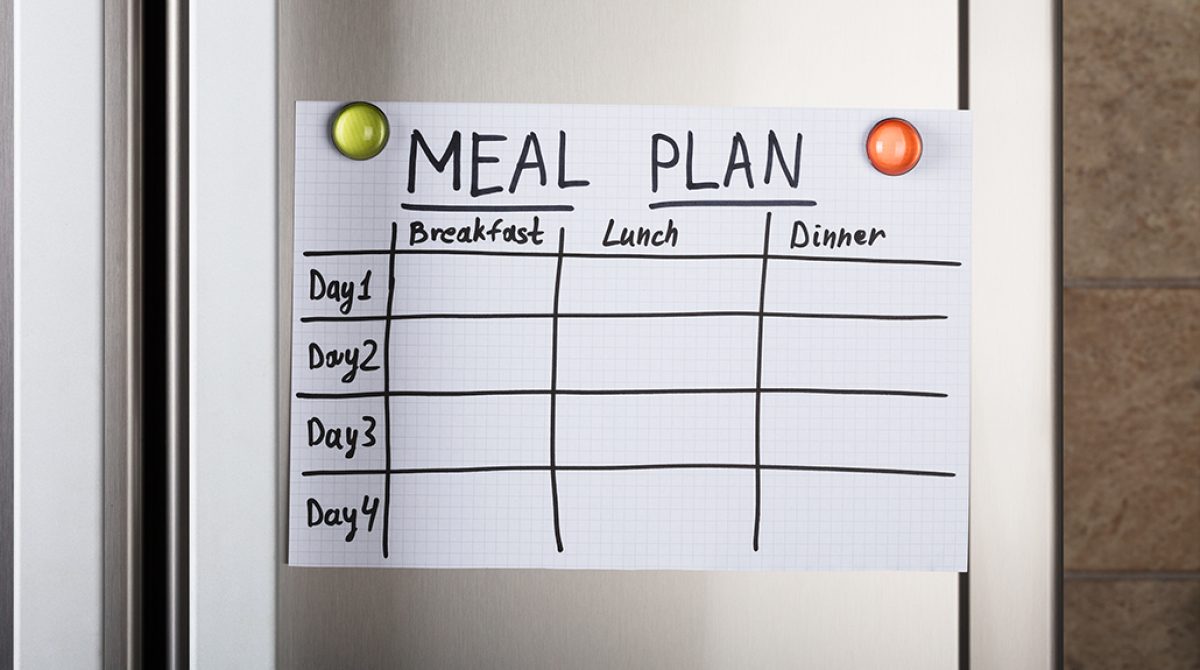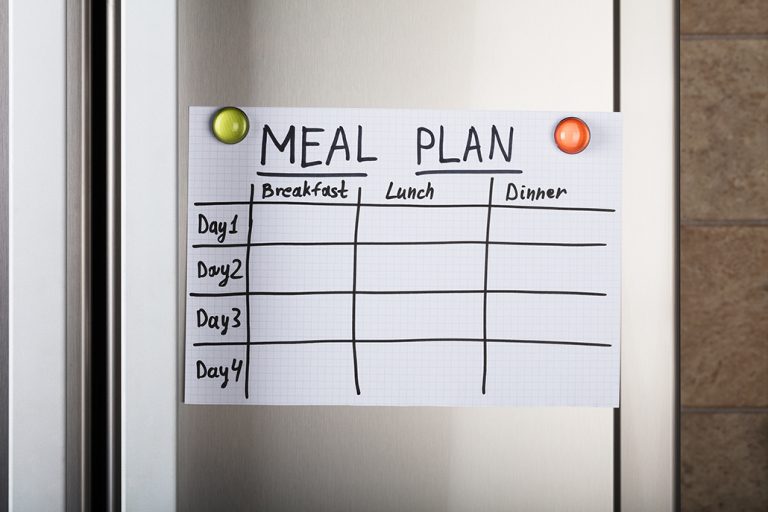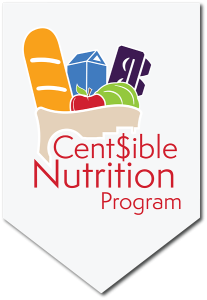Warm days are almost here and that means longer days and fun
in the sun. Cooking may take the back burner as you jump into your summer
schedule, but healthy meals are still within reach. In this newsletter, learn
how to use smart shopping and meal prepping tips to stick to your budget, spend
less time cooking, and create meals that work for your family and schedule.

From Scratch + Convenience
When it comes to budgeting, you may have heard that avoiding convenience foods is the way to go. Convenience foods, like pre-made salads and boxed meal kits, are often more expensive. However, it is important to balance cost with time and taste. The amount of time you have for cooking influences what you cook. Taste preferences influence what kinds and types of food will be enjoyed. For most families, healthy meals start with balancing basic ingredients and convenience foods. As you are shopping, consider these tips to help you make the best choice for your lifestyle:
Price
Food is getting more expensive. Comparing prices between similar items can help keep costs lower. This is true for basic ingredients as well as convenience options. Choose foods that are budget-friendly and offer good value for your money. This value includes the time it takes to prepare the food, your budget, and your family’s taste preferences. If you know your family will only eat a certain type of bread that is more expensive, consider where you might buy less expensive options for other foods.
Read the Label
All packaged food comes with an ingredient list and nutrition facts label. When you have the choice, use this information to choose healthy options. Aim to choose foods lower in salt, saturated fat, and added sugars. Compare similar products for nutrients like protein, fiber, and vitamins.
Versatile Ingredients
Choose foods that can be used in a variety of dishes. This can help you create quick and easy meals with fewer ingredients, saving you time and money. Pantry staples like whole grain pasta or rice, canned beans or fish, and canned vegetables can be combined quickly to create several different, flavorful dishes. These items are also shelf stable and will last, even if plans change. Note that shelf stable, frozen, and fresh foods all have a place and a purpose in our diet. They also allow us to have more flexibility and variety in our meals.
Check for Sales and Deals
If you have a little extra in your budget, check out sales. Sales can be a good way to buy food at a lower price. Things like bread, milk, cheese, and fresh meat can be frozen and thawed later when you are ready to use them. Freezing these items also allows you to set food aside for months where the budget is tighter or the schedule is busier.
Also, consider price differences in sizes. Often, larger sizes of things like frozen fruits or vegetables, cereal, and meat, cost less than smaller sizes. It is always a good idea to compare prices per ounce to make sure.
Flexible Meal Planning

Balancing basic ingredients with convenience foods can help you stick to your budget without wasting food. Weekly meal planning allows you to turn those foods into meals without all the stress. This is because when you meal plan, you don’t have to figure out what to cook each day, take extra trips to the store, or guess at what you need to buy. The secret to making easy, fast, and healthy meals on a budget begins with these tips:
Look before you shop.
Before you reach for your keys, check your pantry, refrigerator, and freezer to see what ingredients you already have on hand. Note any leftovers or already prepared food that you can use.
Make a plan for the week.
Consider your family’s schedule and the time you have to cook. Note the school or senior center lunch menu, if these are sources of meals. Think through what meals can be prepared in just a few minutes or what meals could be doubled for planned-overs another day. It may be helpful to first outline the week’s main meals, and then fill in the rest of your meals using MyPlate as a guide.
Set up your grocery trip for success.
After your meal plan is set, organize your grocery list by section of the store. This helps make shopping faster and more efficient. If you have access to a grocery store that uses mobile pick up or has a free app, the cart in the app can be a tool to help you stick to your list. The app can also be useful for price checking and comparing similar foods ahead of time, even if you go into the store to shop.
Cook Once, Eat Twice
If time and budget allow, planned-overs can be a helpful way to meal plan. To create planned-overs, double a recipe or part of the recipe, such as cooking enough chicken for two different meals. Once cooked, refrigerated the extra to use within 4 days, or freeze to use later in the month. On busy days, pull out planned-overs and have a meal on the table with minimal preparation.
There is no one right way to menu plan. Meal planning is a flexible process that can be adapted to fit your family’s culture, taste preferences, and lifestyle. Whichever way you decide to use your ingredients, spending a couple minutes each week making a plan can simplify your cooking and keep you on track for your budget.
For more information on budgeting from MyPlate, check out: https://www.myplate.gov/eat-healthy/healthy-eating-budget
Balancing basic ingredients with convenience foods can help you stick to your budget without wasting food. Weekly meal planning allows you to turn those foods into meals without all the stress. This is because when you meal plan, you don’t have to figure out what to cook each day, take extra trips to the store, or guess at what you need to buy. The secret to making easy, fast, and healthy meals on a budget begins with these tips:

Look before you shop.
Before you reach for your keys, check your pantry, refrigerator, and freezer to see what ingredients you already have on hand. Note any leftovers or already prepared food that you can use.
Make a plan for the week.
Consider your family’s schedule and the time you have to cook. Note the school or senior center lunch menu, if these are sources of meals. Think through what meals can be prepared in just a few minutes or what meals could be doubled for planned-overs another day. It may be helpful to first outline the week’s main meals, and then fill in the rest of your meals using MyPlate as a guide.
Set up your grocery trip for success.
After your meal plan is set, organize your grocery list by section of the store. This helps make shopping faster and more efficient. If you have access to a grocery store that uses mobile pick up or has a free app, the cart in the app can be a tool to help you stick to your list. The app can also be useful for price checking and comparing similar foods ahead of time, even if you go into the store to shop.
Cook Once, Eat Twice
If time and budget allow, planned-overs can be a helpful way to meal plan. To create planned-overs, double a recipe or part of the recipe, such as cooking enough chicken for two different meals. Once cooked, refrigerated the extra to use within 4 days, or freeze to use later in the month. On busy days, pull out planned-overs and have a meal on the table with minimal preparation.
There is no one right way to menu plan. Meal planning is a flexible process that can be adapted to fit your family’s culture, taste preferences, and lifestyle. Whichever way you decide to use your ingredients, spending a couple minutes each week making a plan can simplify your cooking and keep you on track for your budget.

